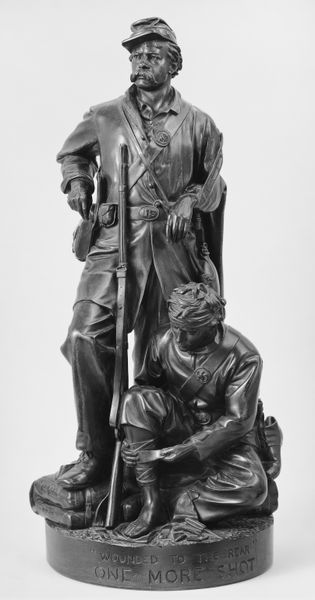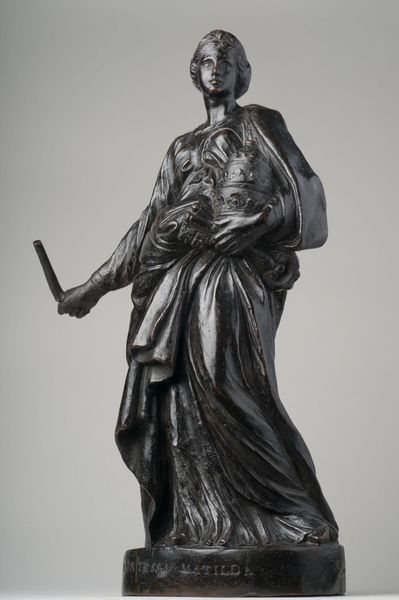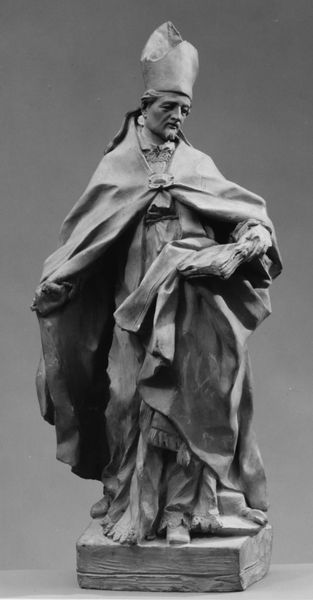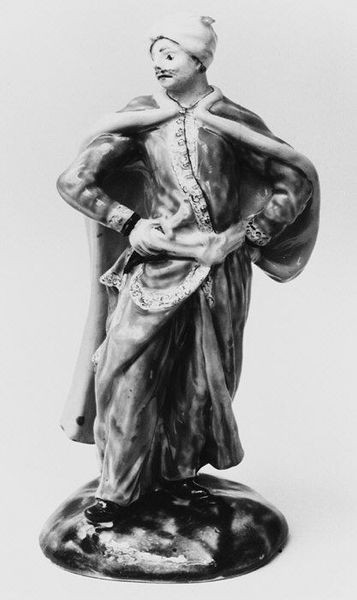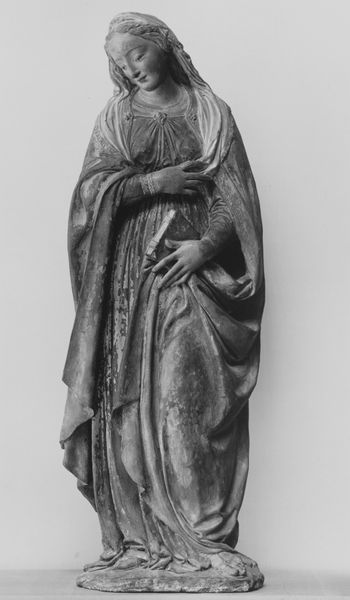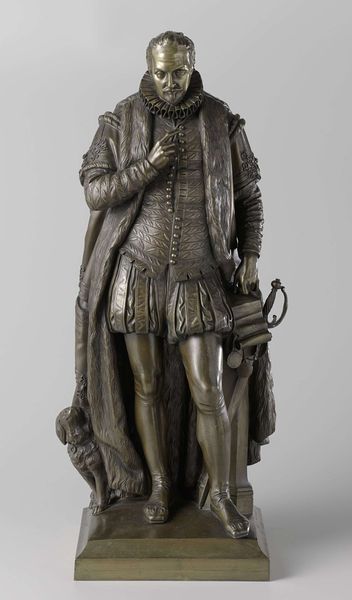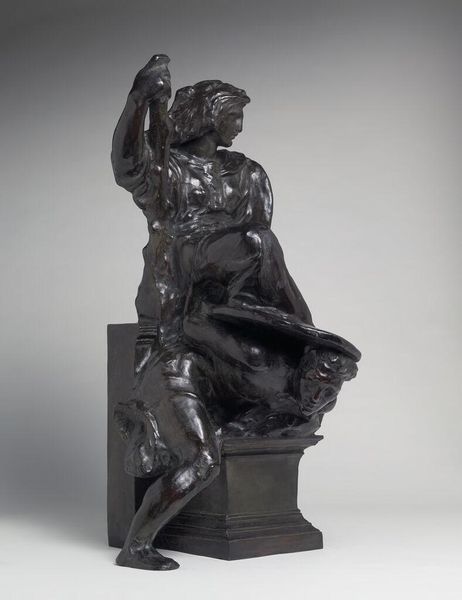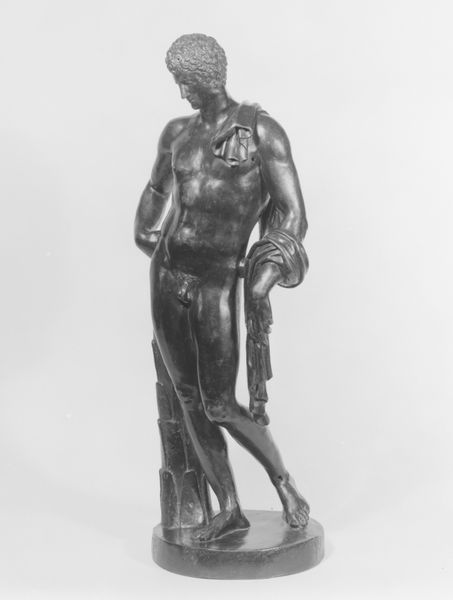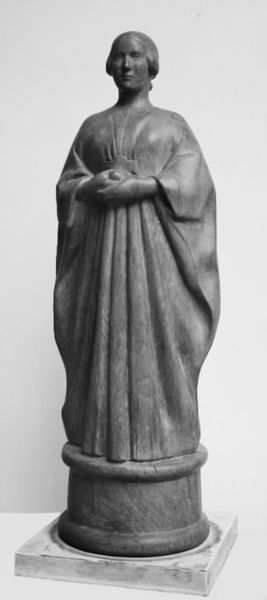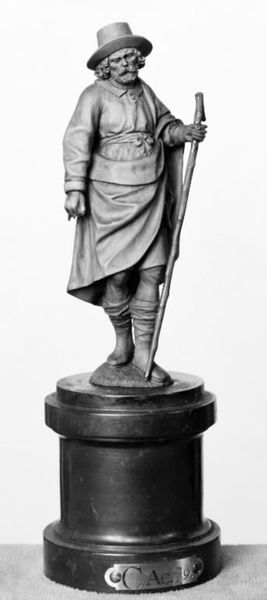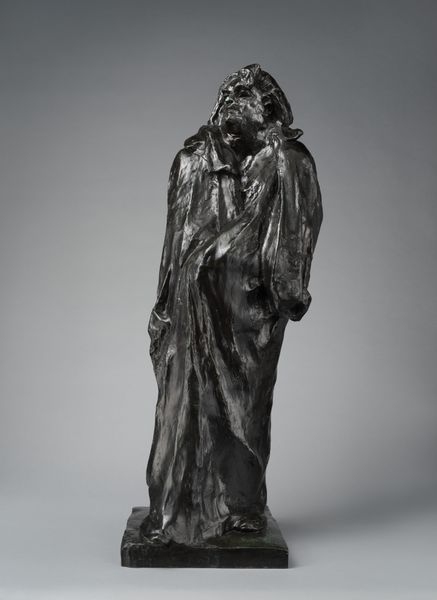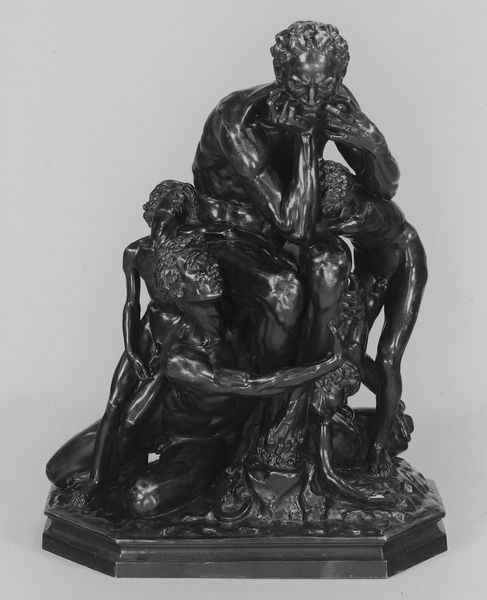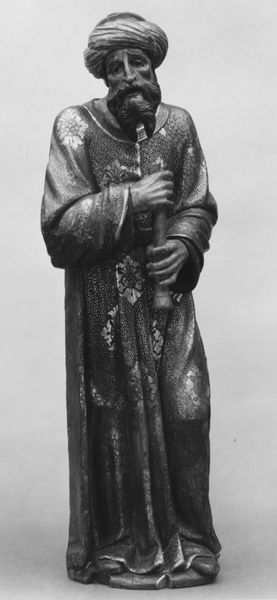
carving, metal, bronze, sculpture
#
portrait
#
carving
#
metal
#
sculpture
#
bronze
#
sculpture
#
men
#
academic-art
#
sword
#
statue
Dimensions: 27 1/2 x 13 1/2 x 16 3/4 in. (69.9 x 34.3 x 42.5 cm)
Copyright: Public Domain
Editor: Here we have George Edwin Bissell's bronze sculpture of "Colonel de Heer Abraham de Peyster," made between 1893 and 1901. It feels incredibly imposing, especially with that long, almost severe face. How should we interpret it? Curator: Well, given that it was made nearly two centuries after de Peyster’s life, the sculpture speaks to the enduring power of certain figures in shaping New York’s identity. Consider the context: late 19th century America, obsessed with its colonial roots, building monuments to its forefathers. It's academic-art intending to legitimize their history through memorializing key historical actors in bronze, right? Editor: Absolutely, it feels very deliberate. What do you think about Bissell’s choices in how he depicted de Peyster – his clothes, the sword, even his facial expression? Curator: Everything communicates power. The elaborate coat suggests wealth and status, while the sword clearly symbolizes military and political authority. Note the determined look in his eyes, that’s carefully chosen imagery, intended to convey leadership and a vision of colonial power that might obscure more complex historical truths. It makes you wonder, who exactly was this statue designed to impress or placate? Editor: So you're suggesting this isn't just a portrait, but an idealized representation for specific political purposes? Curator: Exactly! Public sculptures of this type have been repeatedly raised to make points on state values, belonging and societal structures. Think of all the civil monuments pulled down recently! Statues are so powerful as statements and incredibly loaded and often skewed in narrative. It’s vital we consider these histories of public sculptures as power statements that sometimes rewrite histories, rather than solely memorialize it. Editor: This completely reframes my understanding of the piece. I will think of this piece now from this perspective and it raises so many issues, especially regarding power! Thanks!
Comments
No comments
Be the first to comment and join the conversation on the ultimate creative platform.
